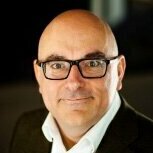Who Worked Where When 1945
-
-
Latest Discussions
-
Driving down Lordship lane around 2.45pm today saw a v sick looking fox walking in and out of the crowd.
-
By James Barber · Posted
I know I'm a bit premature but don't want to forget through too much Chrisntas cheer! Southwark Council Christmas trees recycling arrangements 2025 - bit worrying for the future that they're emphasising the free bit. "We’ll collect and recycle your real Christmas tree for free! Trees should not be taller than 5ft. You should chop any taller trees into smaller pieces. Remove all decorations and the pot or stand and recycle it by: putting your tree with your garden waste containers on collection day requesting a free collection if you do not have a garden waste collection taking it to our Reuse and Recycling Centre [43 Devon Street, SE15 1AL open 08:30-16:30 Mon-Sun] If you live in a flat you must leave the tree: outside on the kerb visible for the collection crew not in a bin store" I'll add the link to the collection booking service when it opens on 22 December. -
By James Barber · Posted
Most homes in East Dulwich / Good Green ward have collections on Tuesdays or Wednesdays. So no changes for them this year. But for those few local homes with collections normally on Thursdays or Friday, with Christmas, Boxing day happening on Thursday and Friday any blue, brown or green bin collections will be delayed by two days. So Thursday 25 December collections will be on Saturday 27 December and Friday 26 December collections on Sunday 28 December. For New Years day those Thursday collections will be on the Friday 2 January and those with normal collections of Fridays that will be on Saturday 3 January. To double check when your Southwark Council rubbish, recycling, food waste, garden waste collections will be taking place please please check here - https://services.southwark.gov.uk/bins/lookup -
Luckily I don't really any regular reason to park at Dawson Heights. It must be very difficult for the residents I do feel for them. Thank you for them. I just presumed that Southwark owned the estate and would be responsible for parking enforcement there.
-
East Dulwich Forum
Established in 2006, we are an online community discussion forum for people who live, work in and visit SE22.


Recommended Posts
Create an account or sign in to comment
You need to be a member in order to leave a comment
Create an account
Sign up for a new account in our community. It's easy!
Register a new accountSign in
Already have an account? Sign in here.
Sign In Now